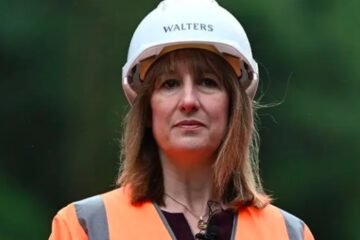Scotland’s housing crisis is back in the spotlight — this time with empty homes firmly in the crosshairs. Housing Secretary Mairi McAllan has declared that it’s simply “unacceptable” for thousands of properties to sit empty while families struggle to find somewhere to live.
More Officers, More Pressure
McAllan wants boots on the ground. She’s pledging more funding for local councils to hire empty homes officers — people tasked with hunting down privately owned houses gathering dust and nudging, persuading or pushing owners to bring them back to life.
One sentence: Scotland already spends £2 million a year supporting the Scottish Empty Homes Partnership (SEHP).
Since its launch 15 years ago, SEHP has coaxed nearly 11,000 empty homes back onto the housing market. It sounds good — but critics say the numbers only scratch the surface of the crisis.

The Numbers Tell a Stark Story
Let’s break it down. According to SEHP’s latest data for 2023/24:
-
46,217 homes in Scotland sat empty for six months or more.
-
Of these, 28,280 have been vacant for over a year.
The top three council areas with the highest long-term empties:
-
Highland: 3,334
-
Edinburgh: 2,751
-
Aberdeen: 2,615
At the other end? East Renfrewshire clocked just 62 homes empty for six months — and apparently none vacant for more than a year.
One short line: It’s not all doom and gloom — but the scale is hard to ignore.
A Blunt Tool in a Bigger Battle
David Alexander, boss of DJ Alexander, Scotland’s largest letting and estate agency, isn’t convinced this focus will fix the crisis. He reckons even if every one of the 28,000 long-term empties were sold or rented tomorrow, it’d barely dent the country’s deep-rooted housing shortage.
Alexander points out: “A vacant home for 12 months can mean anything — an inheritance dispute, a renovation project, a sale falling through. Not all these houses are ready to be lived in tomorrow.”
He also warns that simply targeting second homes and empties could distract from the real need — building more genuinely affordable, family-sized homes in places people actually want to live.
Bringing Life Back to Forgotten Streets
That said, empty homes can drag entire streets down. Locals know the story — weeds growing through driveways, smashed windows, squatters. So for many communities, seeing empty properties revived is a real win.
In some areas, councils are using creative tactics: Compulsory Purchase Orders for properties left derelict for too long; working with owners on grants for repairs; and tax incentives for landlords who bring empty properties back into use.
One-liner: Sometimes, a lick of paint and a new roof can flip a street’s fortunes.
What Happens Next?
McAllan wants a bigger push. She’s clear: “Bringing homes back into use is a vital part of our plan to tackle the housing emergency.”
But she’ll need more than new officers. Campaigners argue that bolder steps like beefing up penalties for persistent vacancy, fast-tracking local council powers, and helping first-time buyers access these properties could all play a part.
Empty homes by council area:
| Council Area | Vacant >12 months |
|---|---|
| Highland | 3,334 |
| Edinburgh | 2,751 |
| Aberdeen | 2,615 |
| East Dunbartonshire | 220 |
| Clackmannanshire | 102 |
| East Renfrewshire | Not listed |
At the end of the day, the question remains — will owners play ball? Many empty homes belong to people who’ve moved away, inherited awkward properties, or can’t afford repairs. Fixing that gap between policy and reality might be the hardest part yet.
One short line: In the middle of a housing emergency, every empty house is a missed chance.


















